Are you a curious fish enthusiast eagerly awaiting a guppy’s upcoming birth? Wondering how to ensure the smooth arrival of a new generation in your aquarium? What does a pregnant guppy look like? How to tell if guppy is pregnant or fat, or even worse, sick? Are you prepared with the right tank setup and diet for expectant guppies?
There are probably dozens of questions that make you scratch your head. But don”t panic, “Pregnant Guppy: Everything You Need to Know” is here to provide you with the insights and expertise you’ve been seeking. Join us as we delve into the stages of guppy pregnancy, feeding tips, signs of impending birth, and post-birth care strategies. Let’s embark on this exciting journey of nurturing new life within your aquatic habitat.
How to Tell If a Guppy Is Pregnant?
Guppy fish are well-known for their constant breeding, especially when the conditions are right. Spotting a pregnant guppy fish isn’t too tricky, but it’s essential to distinguish between a pregnant guppy and one that might be sick.
You Witness Mating
Firstly, if you see a male guppy chasing a female guppy and wrapping his body around her, it’s a good sign she’s pregnant. Male guppies have a special organ called a gonopodium used to fertilize the female’s eggs.
The Belly Gets Larger
As the pregnancy progresses, the female guppy’s belly will become larger and rounded. It’ll even take on a somewhat box-shaped appearance due to the developing fry inside her.
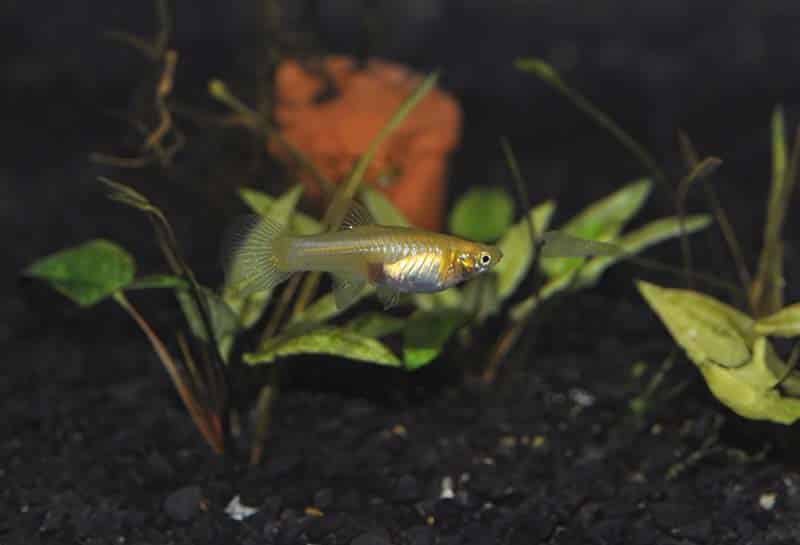
Behavioral Changes
Pregnant guppies show some behavioral changes too:
- Becoming More Lethargic: As the pregnancy progresses, guppies may become a bit lazy. Carrying the extra weight of developing fry takes more energy.
- Hiding More Often: Pregnant guppies might hide more because they’re more vulnerable to predators during this time.
- Developing a Square-Shaped Abdomen: In the days before giving birth, the female guppy’s abdomen may appear more square-shaped due to the positioning of the fry inside her.
- Becoming Restless or Swimming Erratically: Just before giving birth, a pregnant guppy might act restless or swim in an unusual manner.
The Length of the Gestation Period
The gestation period for guppies typically spans 21 to 30 days. However, this duration can vary based on factors like water temperature and the number of fry the guppy is carrying. Warmer water tends to shorten the gestation period, whereas colder water can lengthen it. Moreover, guppies carrying more fry might experience a longer gestation period.
Keep in mind that the gestation period is an approximate timeframe. Some guppies may give birth a bit earlier or later based on their unique circumstances. If you have concerns about your pregnant guppy, it’s a good idea to reach out to a veterinarian or an experienced fishkeeper for guidance and assistance. Your guppy’s health and the safe arrival of the fry are top priorities.
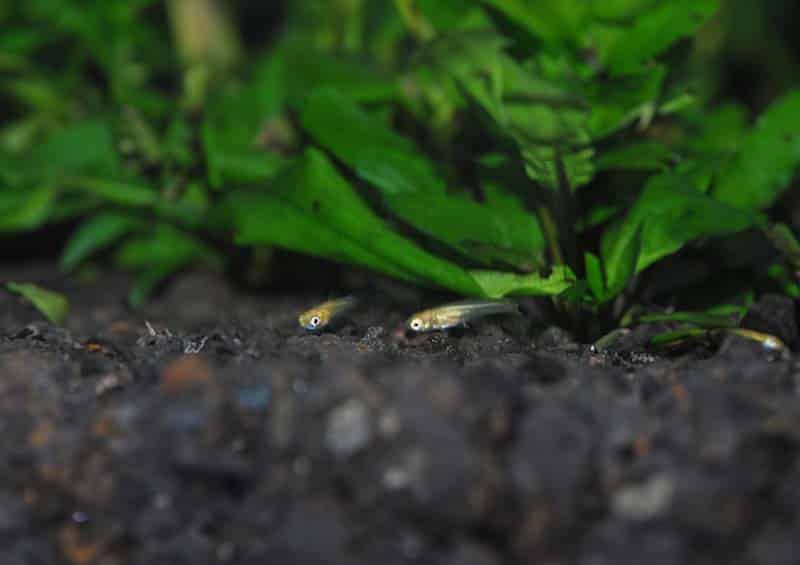
How Many Babies Can You Expect?
The number of baby fish you can expect from a pregnant guppy varies, usually falling within the range of 10 to 50 offspring. This range is influenced by several factors, including genetics, food availability, the mother’s health, and a bit of luck.
Age is a significant determinant as well. Younger guppies having their first pregnancy tend to give birth to fewer and smaller fry, which may be a bit weaker. As the female guppy matures and continues to mate, she typically produces a larger number of offspring with each subsequent pregnancy.
However, it’s important to note that there are no guarantees regarding the survival rate of the fry. Some newborns may not survive for various reasons, such as being eaten by other fish or natural causes. Sadly, some babies might be stillborn.
The mother’s age plays a crucial role in the survival and overall health of the fry. Older, more experienced guppies generally have smoother pregnancies and higher survival rates for their offspring compared to younger ones. It’s a fascinating aspect of guppy breeding, and each pregnancy is a unique experience.
Pregnancy Stages of a Guppy
Understanding the stages of a guppy’s pregnancy is crucial for preparing and providing proper care for both the expectant mother and the upcoming guppy babies.
Stage 1: Mating
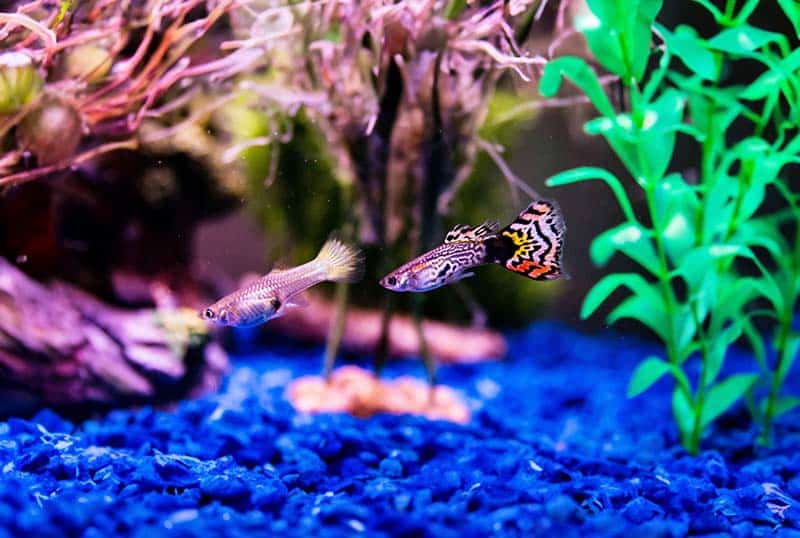
The process begins with the mating of a male and a female guppy. The male guppy fertilizes the female’s eggs internally, a process that can last several seconds or even minutes. Once fertilized, the female guppy stores the sperm in her body until it’s time to fertilize her eggs.
Stage 2: Early Pregnancy
After successful mating, the early stages of pregnancy commence. The female guppy’s abdomen starts to swell slightly due to the developing fry. During this time, she may become more lethargic and consume less food.
A distinct feature of early pregnancy is the gravid spot, a darkened area on the female guppy’s abdomen. This spot becomes more noticeable as pregnancy progresses, and it’s a concentration of melanin, the pigment responsible for the coloration of fish.
Stage 3: Mid-Pregnancy
As the pregnancy progresses into mid-stage, the female guppy’s abdomen continues to swell, and the gravid spot becomes even darker and larger. At this point, you may even be able to see the fry inside the female’s abdomen as they develop.
During mid-pregnancy, the female guppy may display changes in her food preferences, becoming more selective and leaning towards live food options like brine shrimp or bloodworms.
Stage 4: Late Pregnancy
In the late stages of pregnancy, the female guppy’s abdomen becomes notably swollen and takes on a square-shaped appearance. The gravid spot is now very dark and prominent.
The female guppy may exhibit behavioral changes during late pregnancy, such as becoming more reclusive and less active. She might start seeking a secluded spot in the tank in the week leading up to birth, preparing for the delivery of the fry. Additionally, she may display rapid breathing and restlessness as she approaches the birthing period.
Stage 5: Birth
In the final stage, when the female guppy is ready to give birth, she will actively search for a secluded area within the tank. Restlessness may increase, and she might even attempt to jump out of the tank in her search for a suitable birthing spot.
When prepared, she will begin the birthing process, delivering the fry one by one. The fry are born free-swimming and can immediately navigate the water. To nourish the newborns, you can feed them suitable options like baby brine shrimp or infusoria, providing them with the essential nutrients needed for their early growth and development.
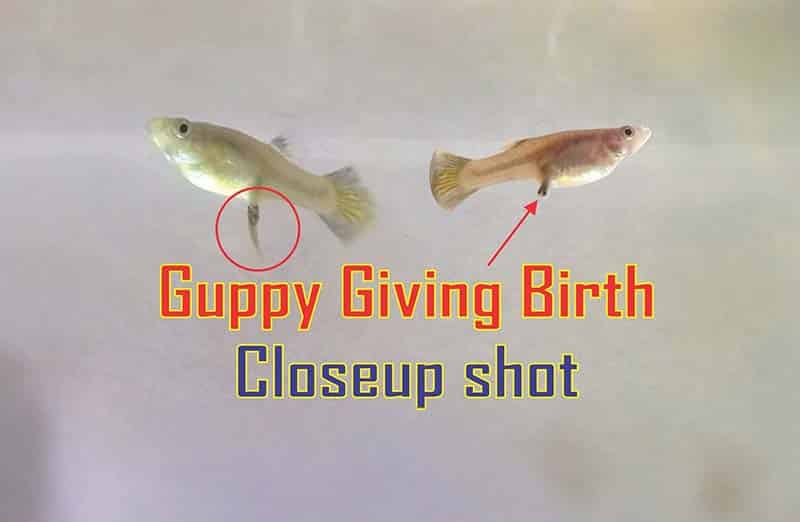
How to Prepare for the Baby Guppies
To ensure the best chances of survival for the upcoming baby guppies, it’s important to take specific steps in preparation for their birth.
Providing a Suitable Environment
- Set up a separate nursery tank, ideally a minimum of 10 gallons in size, to protect the fry from potential predators within the main tank.
- Maintain a clean and well-conditioned environment within the nursery tank, ensuring a temperature range of 75-80 degrees Fahrenheit.
- Equip the nursery tank with a gentle filter and heater. Avoid strong filters that may harm the fry.
- Enhance the nursery tank with hiding places like plants or rocks, providing the fry a safe haven from potential threats.
Feeding a Pregnant Guppy
- Pregnant guppies require a high-quality diet to support the development of their fry. Offer a variety of foods such as flakes, pellets, and live options.
- Avoid feeding high-fat or high-protein foods to the pregnant guppy, as they can pose risks during pregnancy.
- Provide the pregnant guppy with small, frequent meals throughout the day to prevent overfeeding and associated health problems.
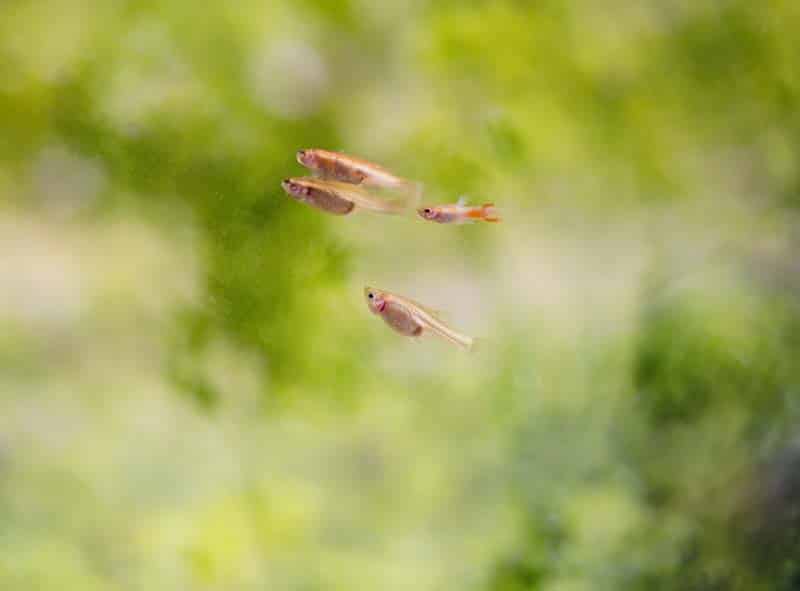
Conclusion
In conclusion, understanding the pregnancy stages and the unique needs of a pregnant guppy is vital for a thriving aquatic community. From providing a suitable environment to choosing the right nourishment, we’ve explored “Pregnant Guppy: Everything You Need to Know.” For more enriching reads and expert advice, dive into the treasure trove of insights awaiting you at National Park Aquarium. Let’s continue this journey of enhancing our underwater realms, one fascinating blog at a time. Stay tuned and keep discovering the wonders of aquatic life with us.




